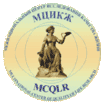Marine A. Mardiyan1, Hasmik G. Galstyan2, Armine V. Bagiryan2, Artyom A. Sahakyan2
1YEREVAN STATE MEDICAL UNIVERSITY AFTER MKHITAR HERATSI, YEREVAN, ARMENIA
2ARTSAKH SCIENTIFIC CENTER, STEPANAKERT, NADORNO-KARABAKH,
At present a number of concepts are known in the biomedical field that reflects the mechanism of the post-war syndrome. Our study of health-related quality of life (QOL) as the main indicator of an integral assessment of the population health in “hot spots” is a new approach. The article presents the first results of a comprehensive QOL study in the post-war period on the example of Nagorno-Karabakh. The study was conducted within the framework of a scientific project in 180 residents of both sexes aged 16 to 60 years (a year after the end of the war in the region). A short version of the WHOQOL-BREF questionnaire (World Health Organization Quality of Life) was used as a tool for population's QOL assessment. For comparisons Student's t-test was used. Differences were considered as statistically significant at p<0.05. Statistical data were processed using the SPSS 22.0 application package. The lowest value was obtained for physical domain (54,6 scores). The highest value was shown for social relationships domain (70,5 scores). Intermediate values – psychological and environmental domains (66,1 и 62,3 scores, correspondingly). At the same time, the male's population indicators of the QOL on all scales slightly exceeded those of the females. QOL indicators decreased with age. QOL assessment using short WHO questionnaire made it possible to establish population data on the main areas of life which may be used to identify factors of the post-war period and improve measures to preserve the population's health in the region. Study results allow to designate the obtained values as regional population QOL's norms in the post-war period, and the established phenomenon of Nagorno-Karabakh requires further study.





